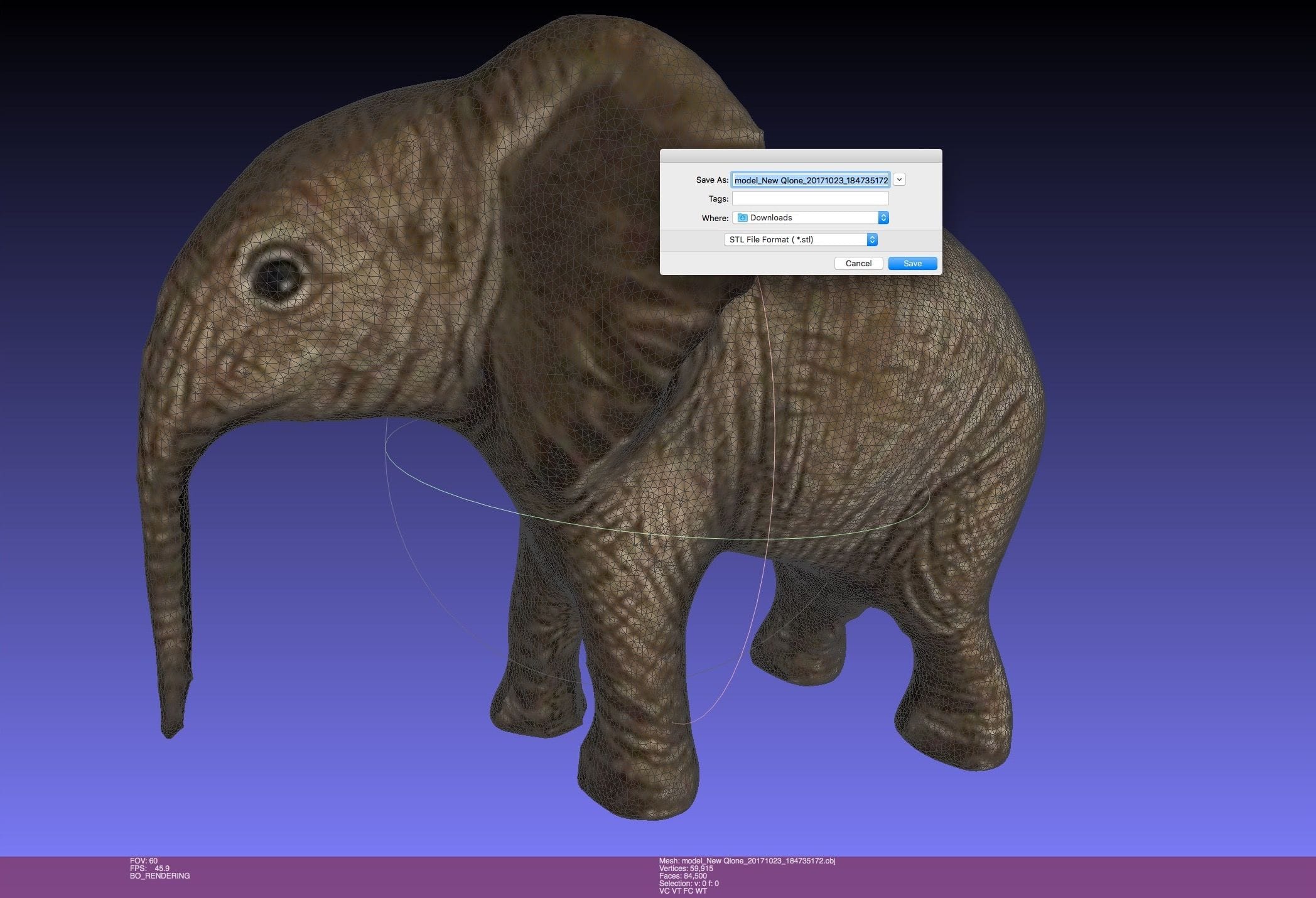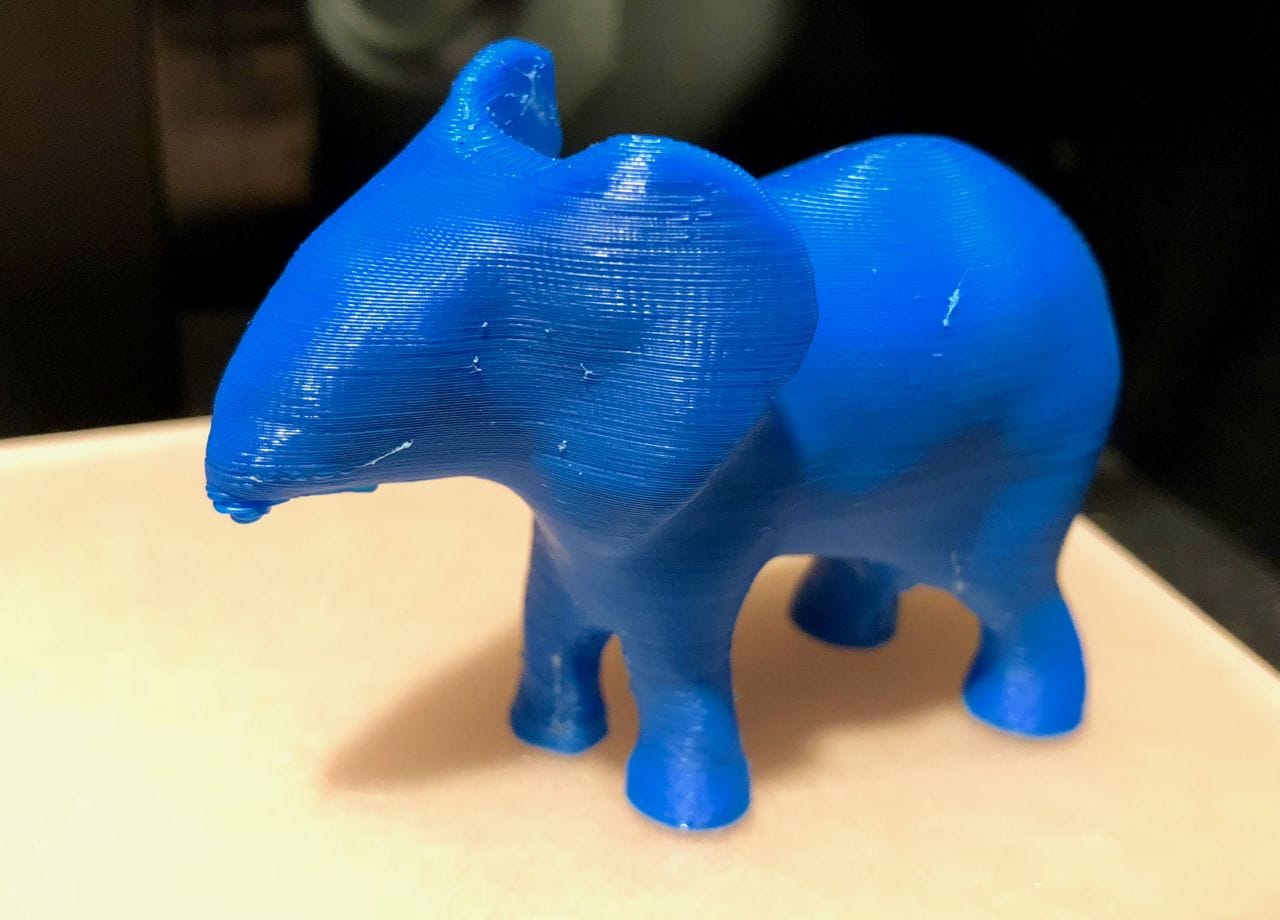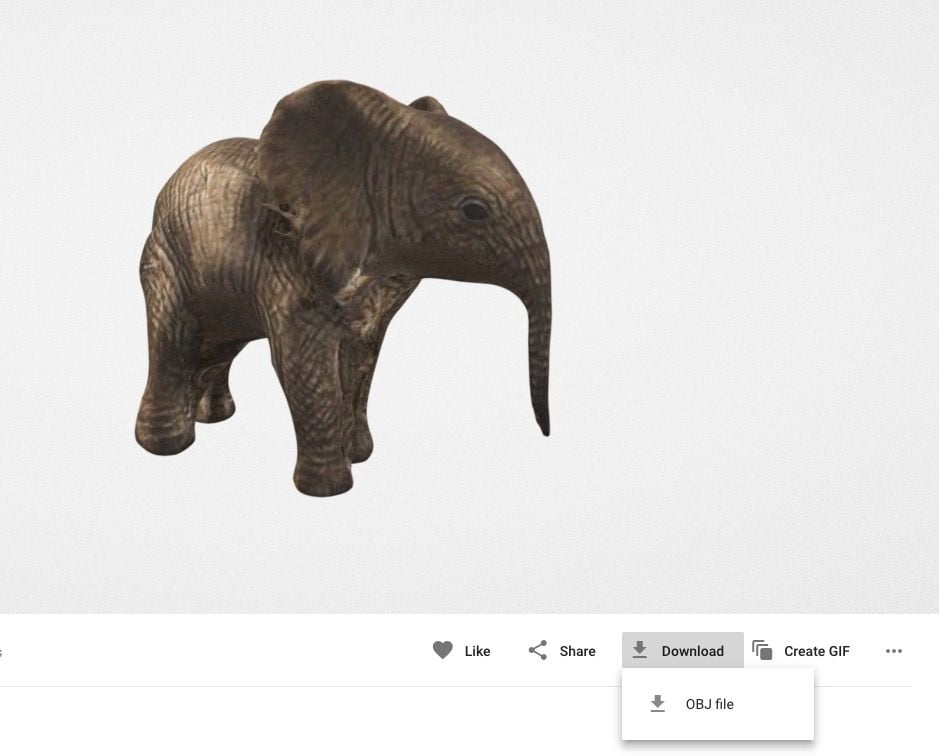
Google announced what will likely become an enormous 3D model repository.
Google Poly is the new repository, and it works just like you’d expect a Google product to do: there’s a large search bar at the top and you simply type in keywords to find 3D models.
The purpose of the system is in reality to provide a repository for artifacts you might consider using in VR/AR applications, so you’ll find not only 3D objects, but also 2D items that would be suitable for use in visual environments.

For investigation of the 3D print workflow, I randomly selected this curious elephant to see if it could be 3D printed. It turns out this item was 3D scanned by a smartphone 3D scanning app, Qlone, which we will no doubt investigate more in the future.
However, the key for 3D print aficionados is that when you browse a 3D model in Poly you’ll be able to download it in .OBJ format. .OBJ is not always useable directly by 3D printing software, but can very easily be converted into, say, STL format through the use of any number of 3D software utilities. I used the free, open source MeshLab tool, for example, to convert this strange scanned elephant from .OBJ to .STL and it’s now entirely suitable for 3D printing, although I suspect some significant support structures will be required.
As this repository is focused on VR/AR, you will no doubt bump into many objects that are not exactly 3D printable, but guess what – that’s the same in MANY 3D repositories. Even in Thingiverse, the largest collection in the 3D print sphere, you will find plenty of non-printable items.
There are some repositories that are truly dedicated to 3D printing, such as MyMiniFactory, who literally 3D print EVERY submission before it hits their pages. You should see their setup; they go through a lot of plastic.

Every new repository starts very small, and most ventures don’t survive because they cannot attract submitters. But unlike most 3D repository vendors, this is Google. They are apparently hiring tons of artists and designers to flood the system with initial content, which will then grow organically.
Poly is not designed specifically for 3D printing, but then neither is Google Search, which is used for 3D print purposes all the time.
If Poly survives and grows, it could easily become the defacto standard for storing publicly available 3D models for 3D printing. It would be a trivial matter for Google to include a “printable” tag of some kind, and their researchers could also include all kinds of advanced search functions that may finally solve the “I can’t search for a shape” issue.
Every business has a significant fear that Google, Facebook or other tech giant might suddenly enter their industry, throwing strategies into disarray. And now they seem to have done so in the 3D model repository business. Let’s see how this plays out over the next few years.
Via Google Poly

